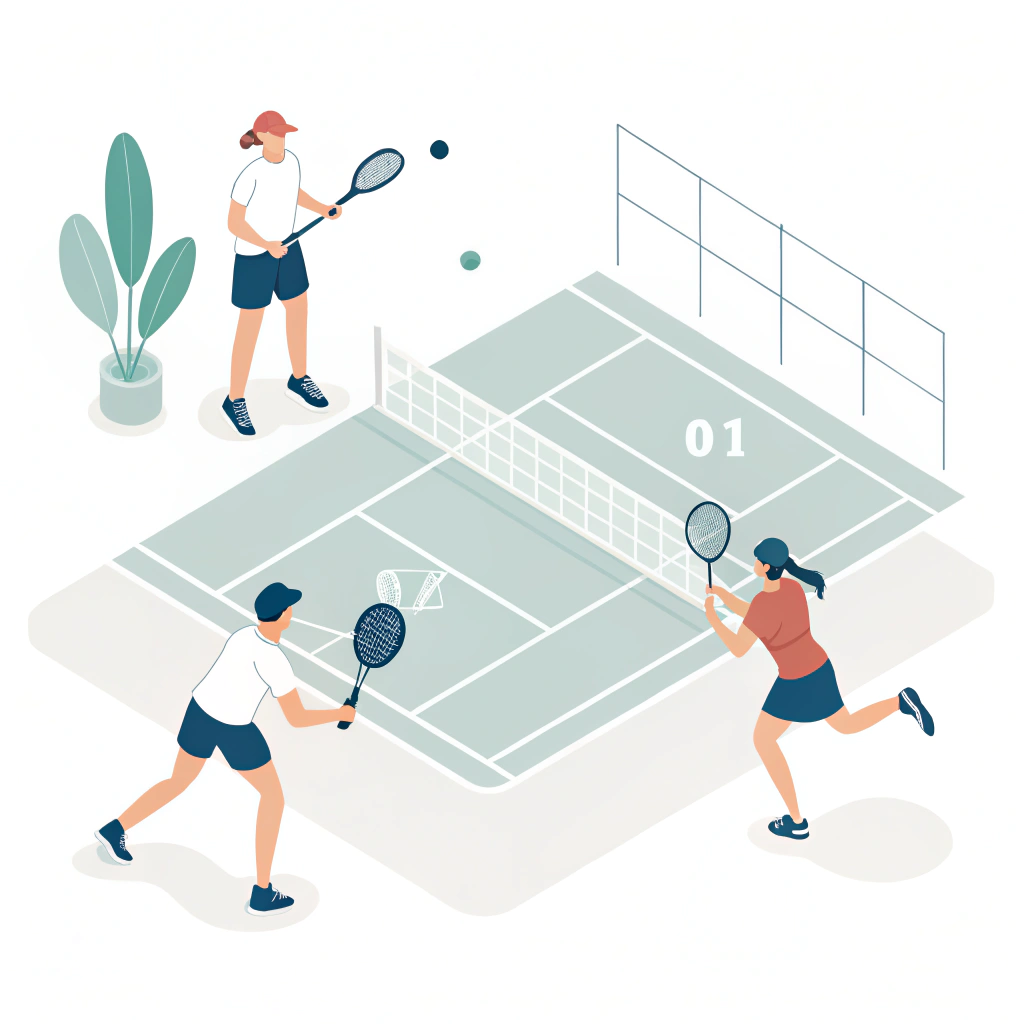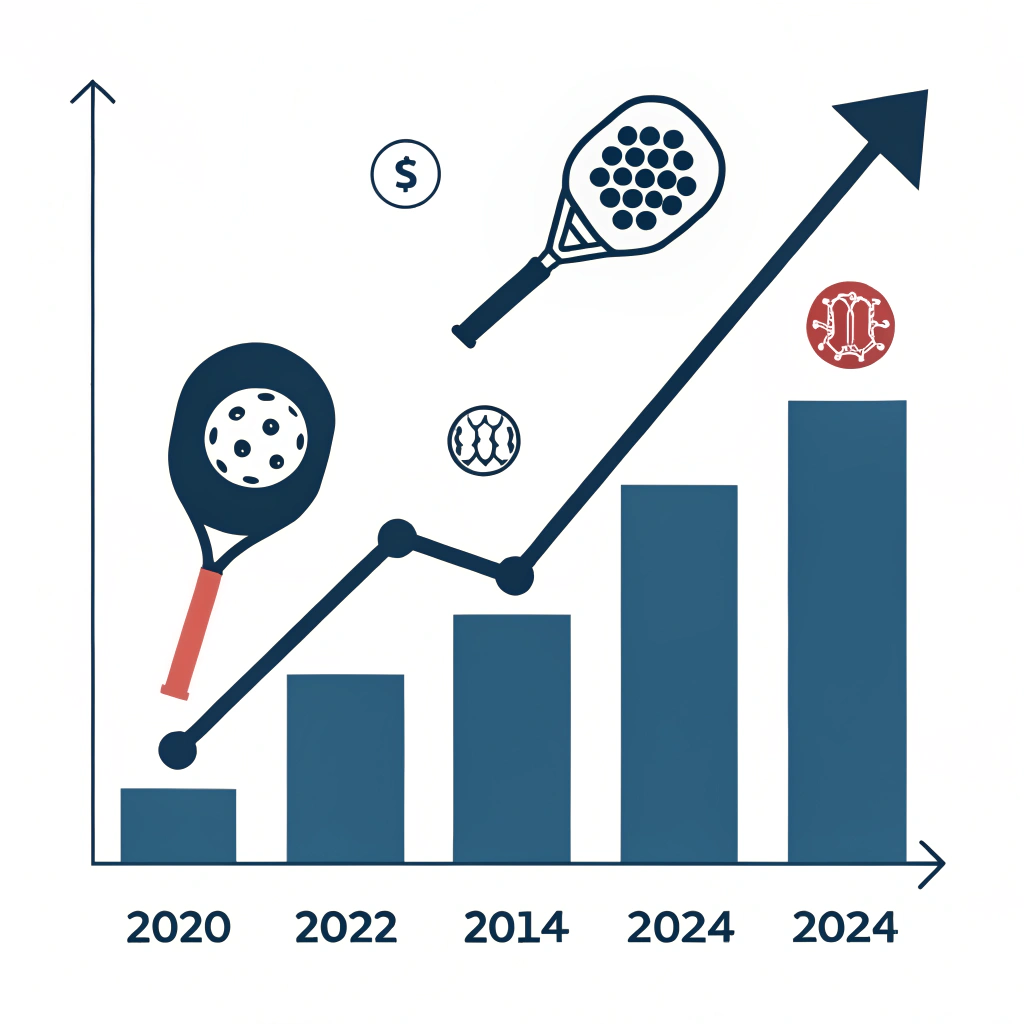Pickleball leagues are thriving in the US, with a wide network of amateur, semi-professional, and professional competitions that provide ample market opportunities and sponsorship possibilities.
Over recent years, pickleball has rapidly grown from a niche recreational activity into a mainstream competitive sport. Numerous leagues—from local community tournaments to nationwide professional tours—cater not only to players of all skill levels but also to businesses looking to tap into a fast-growing market. This expansion is driven by increasing participation, rising media coverage, and the sport’s appeal across a diverse demographic.
The US sports market has seen a notable shift as pickleball balances between its recreational roots and its emerging professional stature. For traditional sports equipment distributors and sports event sponsors, the structured organization of these leagues offers a canvas to enhance brand visibility and forge new business partnerships.
Several key factors contribute to the rapid development of pickleball leagues in the United States:
- Widespread Participation: The sport’s simple setup and emphasis on agility and precision make it accessible for players of all ages. This inclusivity fuels leagues—from beginner-level community challenges to elite competitive events.
- Media and Sponsorship Interest: High-profile tournaments and professional leagues are increasingly covered on sports networks and digital media platforms. This coverage attracts sponsors and commercial partnerships, further solidifying league structures.
- Organizational Framework: National bodies, such as USA Pickleball1, have established official memberships and event standards that help standardize competitions across regions.
- Technological Advancements: Innovations in production methods (e.g., advanced hot pressing2, cold pressing3, and thermoforming4) have led to higher quality equipment, thereby enhancing player performance and league competitiveness.
- Market Expansion: With more professional tournaments emerging, brands have new opportunities to engage with a dedicated audience. Business leaders see potential in aligning with leagues that offer long-term growth prospects.
Pickleball leagues in the US can be broadly categorized into three segments:
| League Type | Description | Key Attributes |
|---|---|---|
| Professional Leagues | These leagues, such as the Major League Pickleball5, feature top-tier players and significant prize money. | High media coverage, sponsorship opportunities, and rigorous competition standards |
| Semi-Professional | Often regional or state-level competitions that provide a platform for up-and-coming talent. | Emerging talent, lower entry barriers, community engagement |
| Amateur/Recreational | Local clubs and community tournaments that are designed for enthusiasts and recreational players. | Inclusive, social engagement, skill development |
This structured approach not only ensures competitive fairness but also provides clear pathways for players and businesses to participate in the sport's growth. For business decision-makers, each league type represents a different level of market penetration and potential audience engagement.
Professional leagues such as Major League Pickleball have gained prominence, splitting their seasons into multiple competitions held across different states. Their approach to scheduling and regional diversity has proven effective in capturing large market segments and driving up sponsorship values. Even semi-professional and amateur leagues bring valuable engagement where local sponsors can test market strategies before scaling to larger events.
With the increasing number of pickleball tournaments, understanding the operational dynamics is crucial:
National associations like USA Pickleball ensure standardized rules and formats. This standardization not only facilitates player transition between different amateur and professional levels but also attracts media and sponsor interest by providing consistency and predictability.
Business insights are critical when analyzing league success. For example, paddle manufacturers such as NEX Pickleball utilize advanced production techniques (e.g., advanced hot pressing2, cold pressing3, and thermoforming4) to craft paddles that meet rigorous performance standards demanded by competitive play. High-quality equipment lends credibility to leagues and creates a symbiotic relationship between manufacturers and tournament organizers.
The sponsorship models in professional leagues are akin to those in established sports. Sponsorship deals often include television rights, branded equipment, and on-site promotions—all elements that require robust market data and consumer insights. As a result, leagues adopt a multi-tiered sponsorship framework that can be tailored for local, regional, or national partners.
A quick look at these operational dynamics reveals why leagues are appealing to B2B partners:
- They provide measurable audience demographics.
- They facilitate targeted marketing, especially in regions with high participation rates.
- They offer scalability in sponsorship and product placements.
One important aspect for professionals in the sports distribution industry is understanding the economic ecosystem around these leagues. The professional circuit, while still young, mirrors the developmental trajectory of other mainstream sports. For instance, professional players' earnings, though modest compared to traditional sports, have shown steady improvement—a factor that signals increasing league investment and fan engagement.
A simplified example from industry data indicates that:
- Annual salaries of professional players in key states (such as California and Minnesota) average in the low $30,000s with weekly earnings approximating $640.
- As public interest grows, these figures are expected to rise further, enhancing the overall brand equity of the sport.
Such economic indicators are crucial for industry partners as they forecast trends that can influence product demand and promotional strategies.
For sports equipment distributors and related B2B partners, the evolving pickleball league scene offers several strategic advantages:
Aligning with established leagues brings brands into direct contact with a dedicated and growing audience. Sponsorships can take various forms—from naming rights and branded equipment to exclusive partnerships for paddle and accessory distribution. Businesses can leverage these partnerships to "test the water" in emerging markets and fine-tune marketing strategies based on direct consumer feedback.
Manufacturers can collaborate with league organizers to develop customized paddle designs that cater to different skill levels—from amateur to professional. This not only drives product innovation but also signals a commitment to improving the sport overall. Customization options further open avenues for on-demand printing services and player personalization—key trends among modern consumers.
The geographical spread of pickleball leagues across states like Arizona, California, Florida, and Georgia provides an excellent opportunity for businesses aiming to expand their regional market presence. By engaging with local clubs and state-level competitions, distributors can better understand regional consumer behaviors and adapt their offerings accordingly.
Investing in market research and leveraging data analytics is essential. As leagues evolve, data on player demographics, viewership metrics, and participation trends can provide actionable insights. This data helps businesses make informed decisions about product launches, inventory management, and promotional campaigns tailored to league events.
A strategic approach involves:
- Reviewing league demographic reports.
- Analyzing sponsorship returns.
- Adjusting marketing strategies based on real-time performance metrics.
For decision-makers evaluating the potential of pickleball leagues, consider the following steps:
• Evaluate regional league growth and participation data to identify untapped markets.
• Establish partnerships with league organizers, benefiting from sponsorship and exclusive product placements.
• Leverage data analytics to measure the performance impact of sponsorships and marketing efforts.
• Monitor advances in equipment technology, as improvements in production methods can translate into competitive advantages for partnered brands.
These steps can ensure that your business aligns with a dynamic and exciting segment of the sports industry, providing both immediate and long-term returns on investment.
The sport of pickleball has firmly established itself as a dynamic and growing market within the US. The multi-tiered league structure—from local amateur competitions to nationally recognized professional circuits—offers rich opportunities for engagement, sponsorship, and product innovation. For businesses in the sports equipment and recreational industries, aligning with these leagues provides a strategic pathway to reach a dedicated audience, drive market penetration, and capitalize on emerging trends.
By understanding the drivers behind the sport’s growth and the operational nuances of its leagues, industry professionals can make informed decisions that foster sustainable business growth. As the pickleball ecosystem continues to evolve, staying ahead with timely market insights and agile business strategies will be key to leveraging the momentum of this fast-growing sport.
• Are there any professional pickleball leagues?
Yes, professional pickleball leagues in the US are increasingly popular. For instance, the Major League Pickleball season is split into two seasons and hosts six competitions in states such as Arizona, California, Florida, and Georgia. This structure creates a competitive environment that attracts not only top players but also significant media and sponsorship attention.
• What is the salary of a pro pickleball player?
Professional pickleball players earn modest incomes compared to traditional sports, with annual salaries averaging around the low $30,000s in key states like California. Weekly pay for pro players typically falls in the range of $630-$640. These figures are gradually increasing as the sport grows in popularity and attracts more commercial investment.
• What are the different types of USA Pickleball memberships?
USA Pickleball offers various membership types tailored to different player needs. The memberships—Champion, Challenger, and Casual—are designed to provide a range of benefits that cater to competitive athletes, dedicated players, and recreational enthusiasts, respectively, making it easier for individuals to engage with the sport at their preferred level.
-
USA Pickleball: Click to learn more about the governing body that sets official standards and membership protocols for pickleball competitions, fostering consistency and growth within the sport. ↩
-
hot pressing: Click to understand the advanced manufacturing technique used in paddle production that enhances performance by applying high pressure and heat to mold materials. ↩ ↩2
-
cold pressing: Click to learn about the production method involving pressing materials without the application of heat, which plays a role in optimizing equipment quality. ↩ ↩2
-
thermoforming: Click to discover the process of shaping plastic materials using thermal energy, a key technology in producing high-quality pickleball equipment. ↩ ↩2
-
Major League Pickleball: Click to explore an in-depth look at the premier professional pickleball league, including its structure, media exposure, and opportunities for sponsors and partners. ↩







